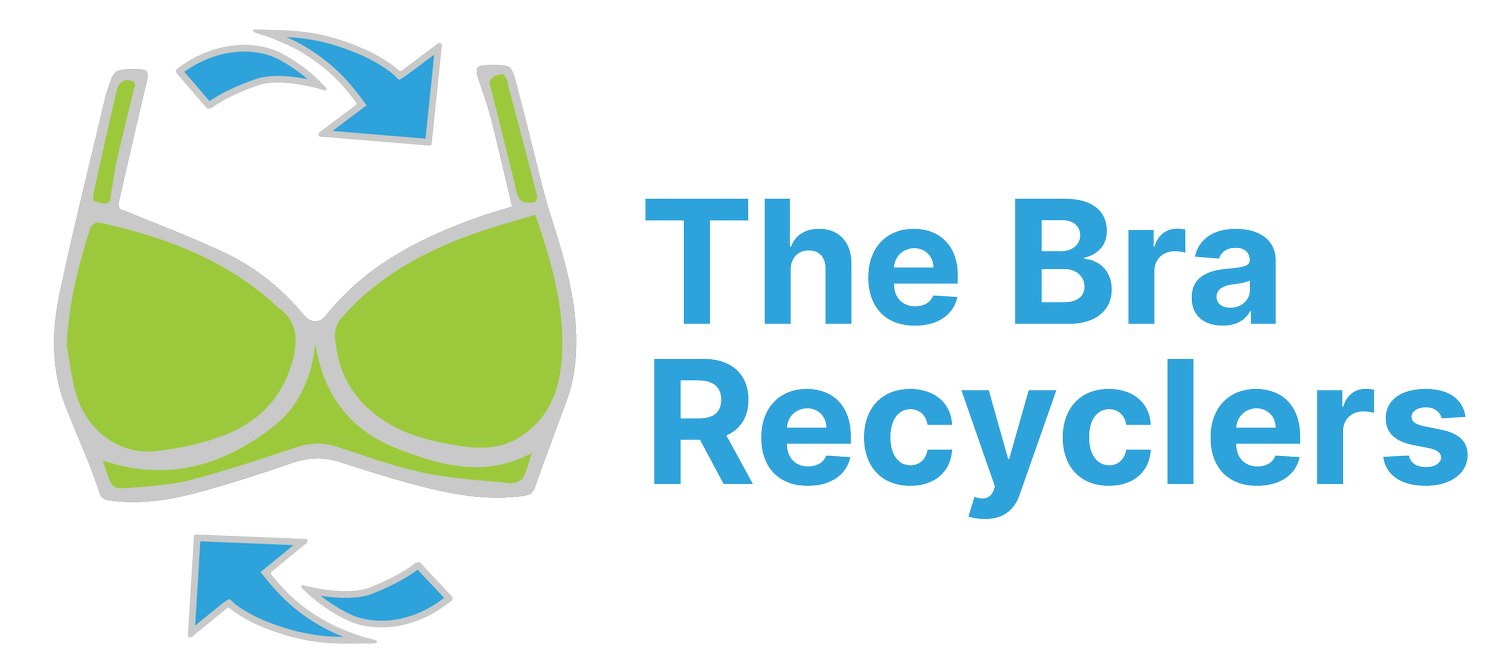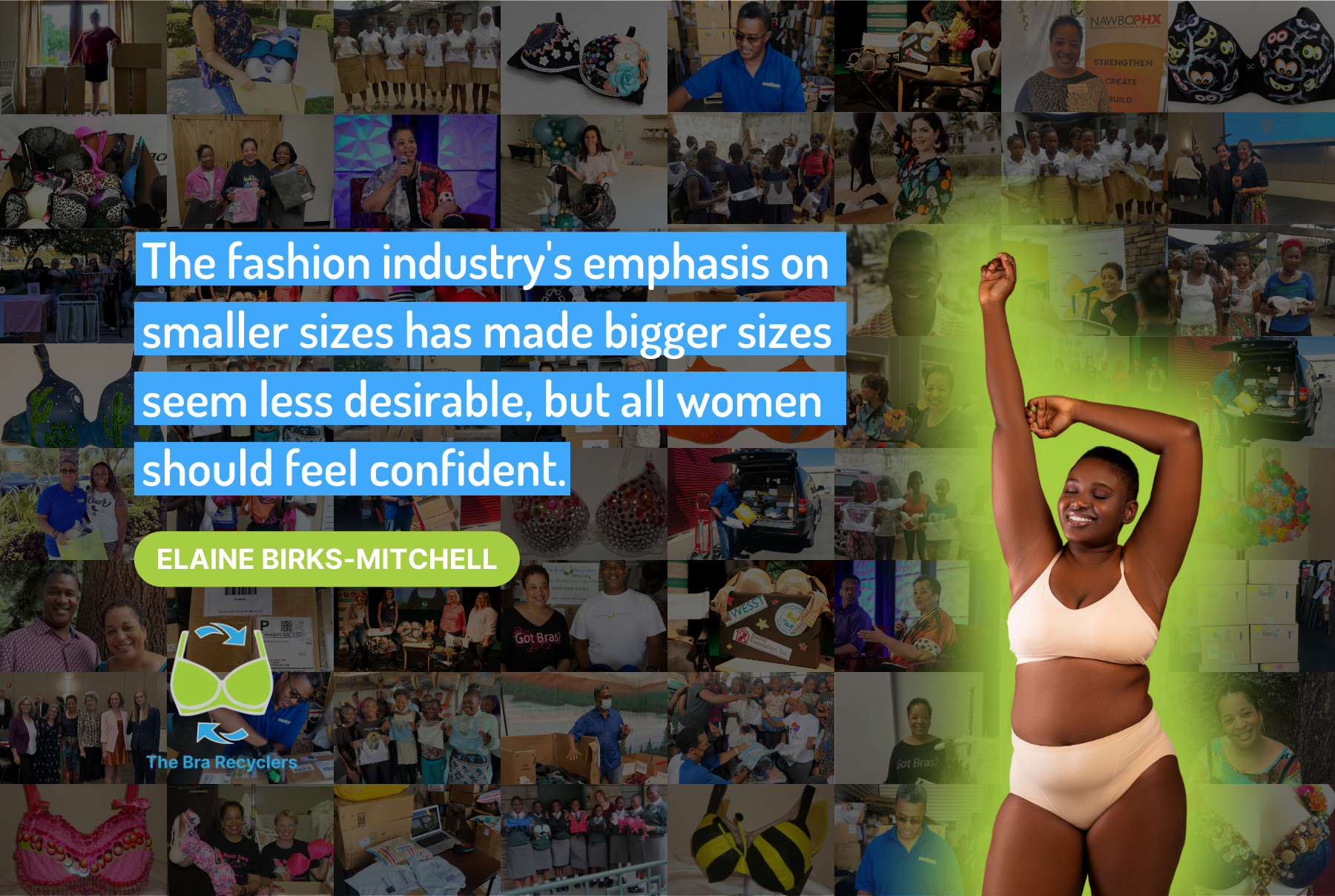Addressing the Needs of the Underserved Plus-Size Community: Advocating for Inclusivity in Fashion
For over 15 years, I have dedicated myself to fitting women and girls in need. One of the most heart-wrenching challenges we face is the shortage of plus-size bras. During our fitting events at shelters, transitional programs, and Title 1 schools, we aim to provide every attendee with at least one bra.
However, the plus size bras—sizes 38C and up—are always the first to go. The joy on the faces of those who finally receive a comfortable, well-fitting bra is unforgettable, but it's equally painful to see others leave empty-handed because we ran out of their size.
I met a woman at my booth who showed me her bra straps, which were held together with safety pins. She was very happy to finally find a bra that fits her well, was clean, and made her feel good about herself. Seeing her leave wearing her new bra and bidding farewell to the old one brought smiles to our entire team.
The Problem with the Plus-Size Market
Marie Denee from The Curvy Fashionista underscores the persistent neglect of the plus-size community by the fashion industry. Despite making up 67% of the US population, plus-size individuals are catered to by only 12% of all clothing production.
Even more alarming is that only 8% of retail stores in the US offer plus-size options. This disconnect raises critical questions about inclusivity and representation in fashion.
Myths and Realities of Plus Size Fashion
Society's beauty standards have created myths about plus sizes, leading to body shaming and unrealistic ideals. The fashion industry's emphasis on smaller sizes has made bigger sizes seem less desirable, but all women should feel confident.
It's important to challenge these myths and promote body positivity and inclusivity in fashion.
Myth #1: Plus Size Fashion is a Temporary Trend
One of the most persistent myths is that plus size fashion is a temporary trend. This misconception suggests that the demand for plus-size clothing is fleeting and not worth brand investment.
However, this couldn’t be further from the truth. Plus size women comprise a significant portion of the population, with 67% of the US population being plus size. This demographic is large and growing, and their need for stylish, well-fitting clothing is a constant.
Myth #2: Plus Size Clothing is Less Desirable
Another damaging myth is that plus size clothing is less desirable or inherently less stylish than smaller sizes. This myth is rooted in outdated beauty standards that prioritize thinness. In reality, plus size fashion can be just as trendy, chic, and innovative as straight-size fashion.
Many designers and brands are now embracing the plus size market, creating beautiful and fashionable clothing that meets the needs of plus size women.
Myth #3: Plus Size Women are Less Confident
There is a harmful stereotype that plus size women are less confident or less interested in fashion. This stereotype often justifies the lack of plus size options in the fashion industry. However, plus size women, like all women, have diverse tastes and styles and deserve to express themselves through fashion.
The rise of body positivity movements has shown that confidence comes in all shapes and sizes, and plus size women are increasingly demanding representation and options in fashion.
Myth #4: Plus Size Fashion is Not Profitable
Many brands have historically avoided the plus size market, believing it less profitable. This myth has been debunked by the success of numerous plus size brands and lines that have tapped into this underserved market.
The demand for plus size clothing is robust, and brands that cater to this market can see significant financial returns. Inclusivity in fashion is the right thing to do and a smart business move.
Reality: The Need for Inclusivity and Representation
The reality is that the fashion industry has a long way to go in terms of inclusivity and representation. Plus size individuals deserve the same variety, quality, and access to fashionable clothing as their straight-size counterparts.
The lack of plus size options in many stores and the limited size ranges available online are clear indicators of the industry's failure to meet this need.
Inclusivity in fashion means offering a wide range of sizes, ensuring that plus-size clothing is readily available, and creating styles that make plus size individuals feel confident and beautiful. It also means changing the narrative around body sizes and challenging the harmful stereotypes and myths that have persisted for too long.
Discrepancies Between Men's and Women’s Plus Size Options
Have you ever noticed how men are frequently described as "larger" or "tall" rather than "plus size"? This disparity alone contributes significantly to the unequal representation of plus size clothing between genders.
So, not only do plus size women face marginalization compared to straight-size people, but they are also misrepresented compared to men.
“But on the whole, men’s fashion tends to be more size-inclusive, meaning that if you’re a larger man, you can essentially shop in one section, where you’ll have a much larger range of sizes… This is just a reflection of the way that larger women are perceived and marginalized within our society, and is very much enveloped in beauty ideals.” - Downing Peters, What really is plus-size fashion? CNN article.
Size is Just a Number…
Growing up, my sisters and I used to joke about reaching "plus size" when we were no longer in single digits. It's ironic and frustrating because the average clothing size for women in the United States is between 14 and 18.
When fitting women and girls, I emphasize not to worry about the size label. My goal is to ensure they feel comfortable, confident, and fabulous. Often, I don’t even mention the size; I simply say, “Trust me, just try this on.”
You know the saying "age is just a number"? Well, the same goes for bras. The number and letter are just a starting point to help you find a bra that makes you feel and look amazing.
Looking Ahead
The fashion industry must commit to inclusivity and sustainability to serve the plus-size community better. Retailers should expand their size ranges and ensure that plus-size options are readily available in-store and online. Additionally, public awareness campaigns can help debunk myths and promote body positivity.
Addressing the needs of the plus-size community requires a collective effort. By providing properly fitting bras and promoting inclusivity, we can restore dignity and confidence to many underserved women and girls.
At The Bra Recyclers, we remain committed to this mission but need the broader fashion industry to join us in making a lasting impact.
How Can You Help?
The journey towards inclusivity in fashion is ongoing, and we need your support to ensure that every woman, regardless of size, has access to the undergarments and clothing that make her feel confident and comfortable. Here’s how you can help:
#1 Recycle Plus-Size Bras
If you have gently used or new bras, especially in plus sizes, consider recycling them with The Bra Recyclers. Your contribution can significantly impact the lives of women and girls in need.
#2 Support Inclusive Brands
Choose to shop from brands that prioritize size inclusivity and body positivity. By supporting these companies, you encourage more brands to expand their size ranges and embrace inclusivity.
#3 Advocate for Change
Reach out to your favorite brands and retailers and ask them to expand their size offerings. Your voice as a consumer is powerful and can influence industry practices.

